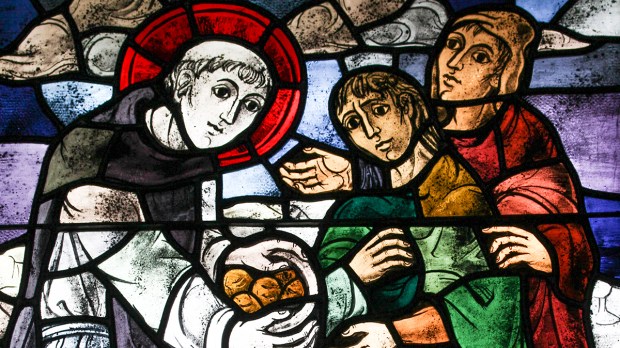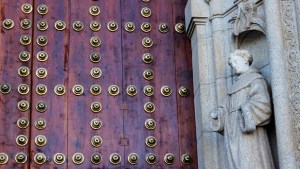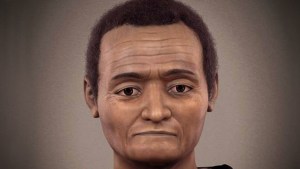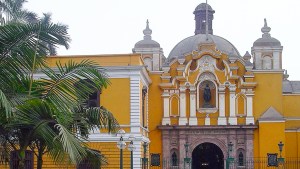St. Juan Macias was a member of the Order of Preachers, commonly called the Dominicans. The Dominicans are a mendicant order founded in 1216 by St. Dominic de Guzman. Juan lived from 1585 to 1645 and is often associated with two other better known Dominican saints. He lived at the same time as St. Martin de Porres and migrated to Lima, Peru, only five years after the death of St. Rose of Lima.
Originally from Spain, Juan later traveled to the New World, and at the age of 37, he entered the Dominican convent of St. Mary Magdalene in Lima as a lay brother. Lay brother is the term traditionally given by the Church to male religious in consecrated life. Since the 1950s, the Dominican Order now calls its non-ordained, or lay, members cooperator brothers. The Dominican Order includes within its ranks these cooperator brothers, who, without seeking priestly ordination, fully live out the vows of poverty, chastity, and obedience as Dominican friars.
Based on documents presented for his canonization and Pope Paul VI’s homily celebrating his recognition as a saint, Juan was well known for two things.
Prayer and the poor
First, he was a man of deep contemplative prayer.He loved the Rosary, which he began to pray as a child in Spain and prayed consistently throughout his life.
Secondly, he was known for his generosity to the poor, often assisting 200 people a day while ministering as a porter for his Dominican community. A porter serves as a doorkeeper to a religious convent or monastery and is often the first point of contact for those coming to the convent seeking aid.
St. Juan Macias also knew hardship. He was orphaned at age five and migrated to the New World later in life. Poverty, migration, and manual labor were major adversities in his life.
Juan could hardly read or write, but as a Dominican, he healed the sick, fed the starving, raised alms for the poor, consoled the downtrodden, and taught the curious. He was a saint of action. Lima, Peru, at this time was a bustling city of the New World, gathering a mix of races and cultures. Due to heavy migration and a tumultuous racial situation, poverty was rampant in the city. Those in need often flocked to the convent — or what Dominicans call a priory — begging the Dominican friars for help. Juan responded willingly with heroic acts of charity.
Sometimes, some days, the food from the priory would run out. Nothing could keep Juan from helping all of those who knocked on the door. At these times, Juan reached out to other neighbors in the city, gathering food and supplies from affluent townspeople. Juan rallied the community, coordinated the gifts, and made sure no one who came to the priory in need was left unaided. He even recruited the help of a donkey to travel from house to house in Lima begging for alms. His donkey had a small sign and bucket hanging from its neck asking for and collecting donations. Juan also set aside a portion of his own daily food to better serve the hungry. If we used modern terms to describe his work, we might call him a fundraiser, community organizer, and social worker.
Juan lived a saintly mix of action and contemplation. His selfless acts of service were fueled by his deep prayer life. Juan’s ascetical and penitential life of prayer in the priory was legendary. He was also extremely obedient to the rule, a written plan of life that guides each Dominican. As a result of his austere penitential practices, he often fell ill and needed risky surgery. Yet regardless of his own poor health, Juan continued to care for all who came to the convent, the rich and poor alike.
Juan’s prayer life was robust. The fruit of his many hours in prayer freed many souls from purgatory. He was particularly devoted to Our Lady and her Rosary, a practice he developed as a child. His devotion to and practice of praying the Rosary continued throughout his years as a Dominican. He wore one Rosary around his neck and wore another on his belt, the traditional location of the rosary for Dominicans. Juan’s contemplative prayer life fueled his active service to those in need.
Words and deeds
As a saint of the Order of Preachers, Juan Macias preached and evangelized to those who came to the priory door. He did not preach homilies, he did not write spiritual books, and he did not teach in a formal academic setting. He left us no writings. Juan preached using words and deeds. Per his role as a porter, he bridged the gap between the enclosed religious community and the external world. The porter connected the interior life of the Dominican convent with the external public who regularly came to the convent needing help with a wide variety of needs. These needs spanned the physical, mental, emotional, and spiritual. Juan prayed with those who came to the convent before caring for their physical poverty and hunger. He offered pious advice and counsel to those needing spiritual encouragement. He taught the Catholic faith to those with questions. Today we might describe him as a spiritual director, pastoral minister, and catechist.
Juan was a man of deep interior prayer, an effective preacher, and a saint who loved the poor. His holy example models for us how to blend the active and contemplative life, how active works of charity spring from an interior unity and intimacy with God. His willingness to serve inspires us today to serve those in need. Juan shows us that preaching and evangelizing is not only for the learned or the ordained but a duty for all Christians in every situation and every state in life.
Each November, a large public procession takes place throughout the streets of Lima celebrating Peru’s three great Dominican saints: St. Rose of Lima, St. Martin de Porres, and St. Juan Macias. Their images are paraded through the city and venerated by thousands.
Juan was beatified with his fellow Dominican cooperator brother and friend St. Martin de Porres in 1837 by Pope Gregory XVI and was canonized in 1975 by Pope Paul VI. His feast is September 18.
St. Juan Macias, intercede for us … pray for us!




